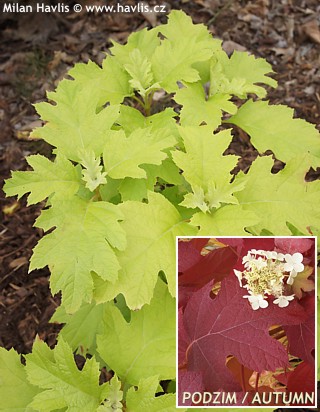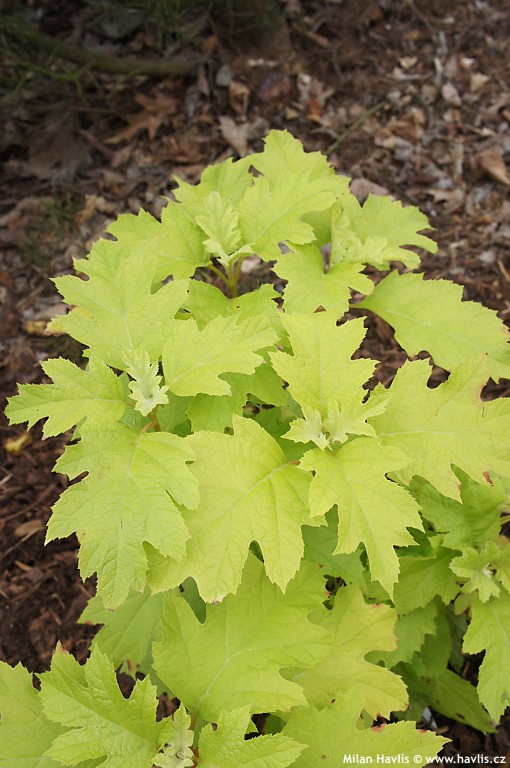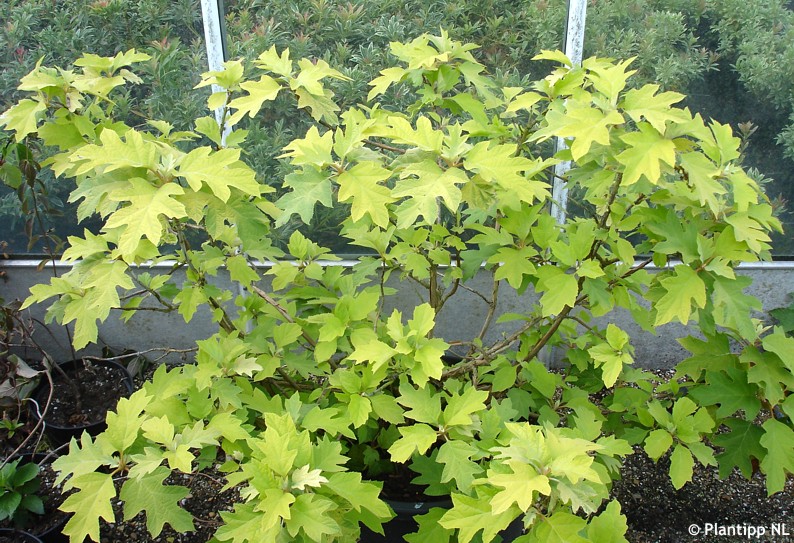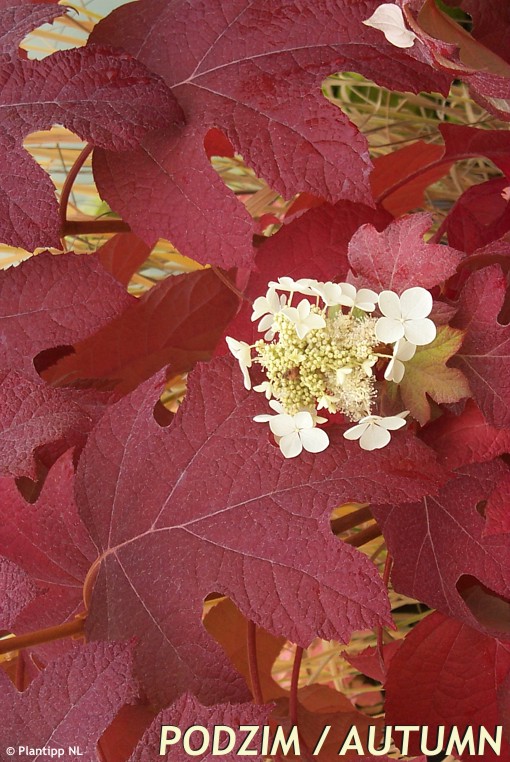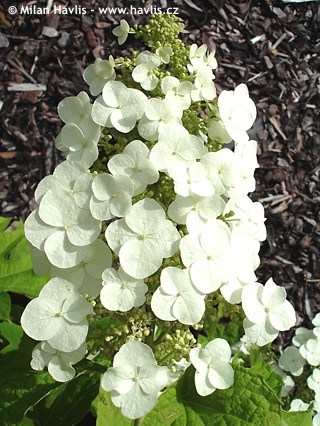Hydrangea quercifolia 'LITTLE HONEY' oak-leaved hydrangea
size/type
medium-sized shrub,medium-sized shrub
usual height
1-1,3m
usual width
1-1,5m
leaves
deciduous broadleaf
colour of leaves
flowers
showy
colour of flowers
blooming time
July-September
location
semi-shade to shade
soil type
neutral
soil moisture requirements
evenly moist (dislikes drought)
USDA zone (lowest)
5 (down to -29°C)
winter protection
for zone 5+6

for zone 7

categorized
Description of the plant:
Little Honey is a new oak-leaved hydrangea that originated in Olympia, Washington, USA, in 1999, and was found as a natural mutation of a variety named ‘Pee Wee’. It is unique for its golden yellow to yellow-green, oak-like, distinctly lobed leaves that turn scarlet red in autumn. In late June medium-sized panicles composed of creamy white flowers appear and continue blooming for 6-8 weeks. In late summer they do not usually fade out but take on pink shades which develop into slightly deeper purple red shades towards the autumn. It is protected by US patent No. PP15477 from 2003.Little Honey is a weaker grower compared to its parent and makes a smaller and compact shrub. Still, we recommend pruning it in early spring a couple of times when young to achieve a nice framework that will ensure a well-branched plant in future. On the contrary, if you need to prune or shape established or mature plants do so immediately after flowering because it blooms on previous year’s wood.
Oak-leaved hydrangea comes from moist and sometimes partly wet sites along river banks and streams, therefore it will need similar conditions in the garden. Grow it in constantly moist soil in full sun or part shade, it can even take temporary waterlogging. It is not fussy about soil pH or quality – it will grow even in clay and compacted ground, but more slowly. Best resultsIt is hardy to about -27°C (USDA zone 5b).
Last update: 24-06-2013
QUICK PRICE OVERVIEW
CURRENTLY SOLD OUT
WANT TO TRY A SIMILAR PLANT?












